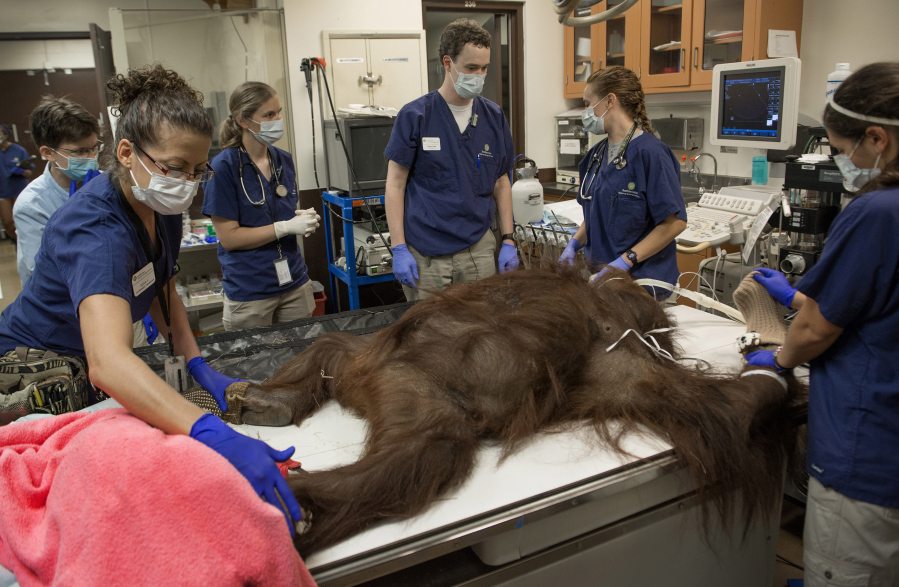A year ago at this time, Illinois resident TR was flabby and fatigued. The black bear has since lost one-fifth of his body weight and has a new spring in his step. Benny, his bobcat neighbor, lost a good quarter of his weight.
Their secret? Not diet pills or bariatric surgery, but rather those boring things your doctor probably orders: Fewer sweets, more veggies and more movement. Evidently what works for people also works for zoo animals.
TR and Benny are among the denizens of Illinois’ Wildlife Prairie Park who received some bad news last year, according to the Peoria Journal Star: They were too fat. TR weighed 756 pounds; Benny weighed 41. Badgers, cougars, raccoons and other non-roaming animals at the park had also ballooned beyond reasonable proportions.
Unsurprisingly, this happens to captive animals with some frequency. Their conditions — human-provided menus and unnatural environments — are probably to blame.
In 2014, researchers at the University of Alabama at Birmingham reported that 40 percent of African elephants in U.S. zoos were obese and at risk of developing heart disease, arthritis and infertility. Last year, the Copenhagen Zoo said its residents had packed on too many pounds. Lucy, a 42-year-old orangutan at the National Zoo in Washington, was deemed 25 to 30 pounds overweight last year, in part because she preferred slacking off to swinging on overhead cables.
The Illinois animals were put on diets and exercise regimens, and they seem to have taken to them with more gusto than Lucy.
That may be because they had no choice. According to the Journal Star, TR and a female bear named Molly were given smaller meals that were hidden around their enclosures “to encourage foraging.” Bobcat and raccoon fare was hidden, sometimes inside boxes.
At recent weigh-ins during exams performed by University of Illinois veterinary students, TR was the biggest loser, having slimmed down to just 600 pounds. Molly dropped from 442 to 392, and Benny, formerly 41 pounds, weighed 30.
“We’ve had a major increase in the last year of guests saying that this is the most active they’ve ever seen these animals and it probably is the most active some of these guys have been in the last few years,” animal curator Adrienne Bauer told the Journal Star.



